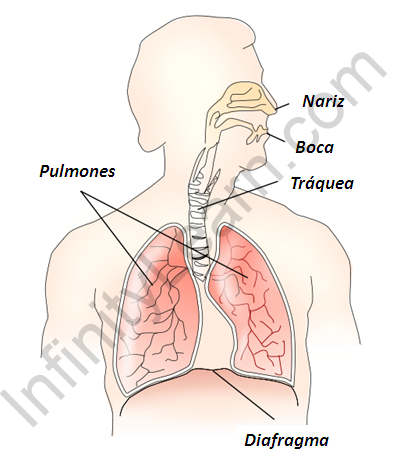Table of Contents
Any condition in the lungs that stops the lungs from performing properly is referred to as lung disease.
We take our breathing and respiratory health for granted, yet the lungs are a crucial organ that is susceptible to infection and harm from the external environment due to frequent exposure to particles, chemicals, and infectious organisms in ambient air. The prevention, control, and cure of these diseases, as well as the promotion of respiratory health, must be a top priority in global health decision-making. In this article, we shall discuss about the lung diseases, and the factors contributing to respiratory disorders.

Explanation
Lung inflammation, damage, and remodeling, as well as progressive degradation of lung function, are the most common causes of respiratory disorders, which are caused by hereditary and environmental factors, as well as social behaviours.
Asthma, cystic fibrosis, emphysema, lung cancer, mesothelioma, pulmonary hypertension, and tuberculosis are examples of respiratory illnesses or lung diseases. Lung disease can cause health difficulties, bothersome symptoms, and even death if left untreated.
Infectious and chronic respiratory illnesses and disorders are the two categories.
Bacterial or viral infections are the foremost common causes of pulmonary infections. A pathogen replicates inside a cell and causes a disease, such as the flu, in the viral kind.
Infectious respiratory diseases are more common in people that have weak lungs and immune systems.
Chronic lung disorders
Chronic lung disorders are divided into two categories: Restrictive or obstructive.
Chronic respiratory diseases are a set of illnesses that damage the lungs’ airways and other components. Hundreds of millions of people worldwide suffer from chronic respiratory disorders that are avoidable.
- Obstructive Conditions: These are conditions in which the airways are clogged or restricted, making it difficult for the lungs to exhale and exchange old air for new air.
- Chronic obstructive pulmonary disease (COPD) is a condition that affects the lungs. Chronic obstructive pulmonary disease (COPD) affects an estimated 65 million people
Infection conditions
Although some respiratory infections might become chronic or recur often, infectious lung problems are usually only transient. Acute lower respiratory tract infections have been one of the leading causes of death and disability in both children and adults for decades.
- Pneumonia is a bacterial or viral infection that affects the lungs. People with chronic respiratory diseases, such as COPD, are more susceptible to pneumonia.
- Tuberculosis is a bacterial infection that attacks the lungs and other organs. For many years, tuberculosis can lie dormant, or latent.
Lung Diseases
Your windpipe (trachea) divides into bronchi, which branch into smaller tubes that run throughout your lungs. These airways can be affected by a variety of diseases, including:
Asthma: Your airways are inflamed all the time and may spasm, resulting in wheezing and shortness of breath. Asthma symptoms can be triggered by allergies, infections, or pollutants.
COPD stands for chronic obstructive pulmonary disease (COPD). You can’t exhale normally if you have this lung ailment, which makes breathing difficult.
Bronchitis has been present for an extended time. This type of COPD causes a persistent wet cough.
Emphysema: In this type of COPD, lung deterioration causes air to become stuck in your lungs. Its defining feature is the inability to blow air out.
Acute bronchitis may be a condition during which the lungs become inflamed. A virus is typically to blame for this rapid inflammation of your airways.
Cystic fibrosis may be a disease that affects the lungs. You have problems removing mucus from your bronchi if you have this ailment. This results in recurrent lung infections.
Emphysema: When the weak linkages between alveoli are broken, this occurs. The most common cause is smoking. (Emphysema also affects your airways by limiting airflow.)
Pulmonary Edema of the lungs: Fluid escapes from your lung’s tiny blood arteries into the air sacs and the surrounding area. One type is caused by heart failure and backpressure in the blood veins of your lungs. In another scenario, a lung injury results in fluid leakage.
Cancer of the lungs: It can take many various forms and start in any area of your lungs. It usually occurs in or around the air sacs within the major section of your lung.
Pneumoconiosis: This is a group of ailments brought on by inhaling anything harmful to your lungs.
Black lung illness caused by coal dust and asbestosis caused by asbestos dust is two examples.
Lungs that affect the veins
Your veins deliver low-oxygen blood to the right side of your heart. It uses the pulmonary arteries to deliver blood to your lungs. Diseases can affect these blood vessels as well.
Embolism of the lungs (PE)- A blood clot breaks off, travels to your heart, and is pumped into your lungs (this is known as deep vein thrombosis). Shortness of breath and low blood oxygen levels are common when a clot lodges in a pulmonary artery.
Hypertension of the lungs- High blood pressure in the pulmonary arteries can be caused by a variety of factors. This might cause chest pain and shortness of breath. If your doctor can’t figure out what’s causing your pulmonary arterial hypertension, they’ll diagnose it as idiopathic pulmonary arterial hypertension.
Crack NEET with Result-Oriented Learning Program from Infinity Learn
FAQs
What is lung disease?
Any condition in the lungs that stops the lungs from performing properly is referred to as lung disease.
Answer: The 2 popular lung infections are:
- Pneumonia is a bacterial or viral infection that affects the lungs. People with chronic respiratory diseases, such as COPD, are more susceptible to pneumonia.
- Tuberculosis is a bacterial infection that attacks the lungs and other organs. For many years, tuberculosis can lie dormant, or latent.
lung diseases.
Infinity Learn App
Now you can find answers to all your subject queries & prepare for your Exams on our Free Educational App – Infinity Learn.





